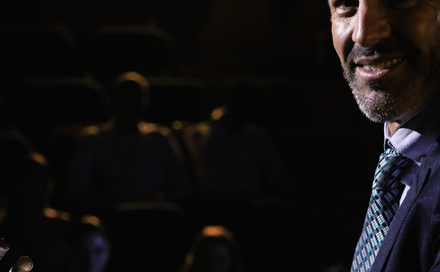In the first of three articles, John Scarrott shares insights and ideas on Preparing, Performing and Personal Growth for chairs and facilitators - a useful read, whether you’re about to volunteer or if you have some experience.Chairing and Facilitating at Conferences
John Scarrott, Communications Skills Trainer and Coach, and an AAE trainer, spoke with Barbara Grobicki, Executive Director of the The Strategic Management Society, Linda Pereira, CEO of CPL Events & Chair of many associations and Lisa Collins, Managing Director of Dovetail Creative and former Head of Membership Engagement at IABM.
Part 1: Preparing well - What you need to know and how you use it.
You’ve volunteered to chair or facilitate at an event. How can you prepare well and make it a success, for you, the organiser and the participants?
Gather useful information

As a relative newcomer to facilitating, Barbara Grobicki began by tapping into her network. “I am a member of a CEO group. I talked to some of my colleagues who I knew were experienced in facilitating. I also know a very experienced facilitator who offered me practical support. These conversations helped me to design my session to go in a different and fresher direction.”
Grobicki also used information supplied by participants in advance of the event to shape her session. “Using the delegate information, I was able to create a sharper theme for my session and tailor my approach to the expectations of the group.”
Get to know your participants
Lisa Collins highlights getting to know the people who will be on your panel. “We are a team. I make sure we meet as a group before the day and also on the day. It’s as important for the panellists to meet each other as it is for me to meet them. We share what brings us here, our expertise, our point of view.”
Listening to their discussions helps Collins to “tailor questions to suit the participants, and gather stories to conjure with in the discussion. I can also spot who might be anxious or quiet, or the super confident speaker, who might need to be ‘managed’”
Linda Periera uses pre-meetings to ask her participants for their 3 main points. “I elaborate on this material and use it to invite a beginning. In doing so it makes a connection between us and enables trust. I show that I won’t invade their space and that I’m not interested in showing how smart I am.”
Use what you know, differently
It’s important to have knowledge of the area you’re chairing or facilitating. But you use it to make everyone else look good.

Collins keeps this top of mind. “It’s not about me talking all the time. It’s up to me to engage the audience. Any session I am chairing is for my panellists. It’s about their time, their story. It’s not about me. I actually found this easier when I was starting out. As I’ve grown in experience, the more I have come to know, the harder it is to hold it back.”
For Pereira, knowledge is something to be used indirectly. “You use it to ask the right
questions, to design links that connect what has just been said to what might come next.
Use your knowledge to make participants feel knowledgeable.”
Grobicki highlights the balancing act involved in getting your preparation right. “Don’t leave it until the last minute but don’t force it either. Allowing yourself that bit more time creates space for better ways of organising the session to emerge, rather than ending up with a last -minute solution.”
It’s your job to manage time
Your participants are not going to manage the session, but they will notice if you overrun!
Collins keeps an eye on where she should be in the session and where she is. And she takes action if she sees it slipping.
She says “I make a judgement about what we can touch on more lightly to us get back on track. I make sure the delegate experience doesn’t suffer and I still deliver what was promised. Delegates don’t tend to know specifically what you had planned, so there will be no sense that they’re missing out on something. This gives me permission to act, as opposed to freezing and letting things get out of shape.”

Periera encourages asking the organiser for help, “ask about what is available to help you keep to time. Is there a timer on stage, a screen with an alert 2 minutes before the end.”
Plan for tumbleweed moments
What do you do if the conversation runs dry? Grobicki and Collins both have answers. For Collins, it is useful to “always have something up my sleeve just in case. No one knows it’s there but me! As a safety net I will seed in one or two questions with a friendly audience member, someone I already know. And I’ll usually ask one of the panellists to come up with the questions.
For Grobicki, although it’s a concern that she plans for, in her experience, “people tend to have questions, people were more engaged rather than less. By preparing a little less information, I created the space for a deeper exploration.”
A huge thank you to Linda Pereira, Barbara Grobicki and Lisa Collins for taking time to share your experience and insights.
John Scarrott is a trainer and coach specialising in the areas of presentations, conference speaking, chairing and facilitation. He offers bespoke training workshops to associations that want to support members to perform well at their events.
John provides in-house training to associations. View the training here.
You can find out more about John at www.johnscarrott.com and at LinkedIn and at [email protected]

